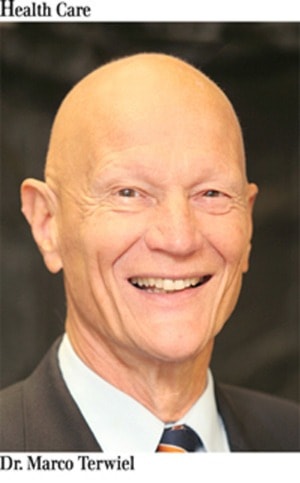If you had not heard yet, our health care premiums are going to rise by four percent in about nine months.
That four percent will raise $22 million in the current fiscal year.
Sounds like a good chunk of money, but not really when we realize British Columbians are currently consuming close to $44 million per day – or a little more than $1.8 million per hour – on health care services.
Even though people may be complaining about this increase in premiums, it is only a drop in the bucket, if you recognize the government is increasing the size of that health care bucket at a rate of half a billion dollars per year – an amount vastly greater than our increased Medical Services Plan payments.
Pity even that half a billion is not nearly enough to pay for the increased demand and, therefore, despite all this additional money, there will be plenty of reasons to be dissatisfied.
Emergency room departments and hospitals will be more overcrowded than ever before, wait times to see any doctor will be longer and the government will feel powerless to do much about it.
Even though these problems are front and centre, the real threat to sustainability lies in disproportionate increase in utilization.
Governments have been willing – save for a brief period in the early ’90s – to increase health spending well above the rate of inflation mainly for political expediency and little fiscal prudence.
Between 1979 and 2009, health spending increased at an average rate of eight per cent a year.
In that same time span, the over-65 population increased by 2.9 per cent, and inflation was 3.4 per cent, while our economy grew by 5.3 per cent.
Theoretically, that economic growth should have been more than sufficient to pay for the expected increased health-care services.
In reality, health-care services were more than double what was anticipated.
There are new very expensive drugs, new technologies, new hospitals, more doctors and nurses (with higher incomes), new administrative structures and so on, all adding to the bill.
The question now is what can we do about paying the bills?
Of course, we could all volunteer to pay a lot more tax, but that is not likely to happen.
Nor will the government have the courage to drastically increase our taxes if they want to have any hope to get re-elected.
Even if they do not get elected, the next government will find itself in the same pickle of not knowing how to finance our bottomless health care system without upsetting the electorate and chasing away the very people and companies who are capable of creating the new wealth needed to pay for not only health care, but all the other government paid services we expect.
The current federal and provincial governments rightfully refuse to go down the path some European countries have taken. We all have heard of the disastrous consequences of financial mismanagement with whole countries teetering on the brink of bankruptcy, massive unemployment and social upheaval.
My long-term solution would be to coach people to take much greater responsibility for maintaining their own health. That can be accomplished in many ways, utilizing what I call the carrot-and-stick approach, with lots of carrots and only for the most irresponsible, the sticks.
Dr. Marco Terwiel is a retired family physician who lives in Maple Ridge.
